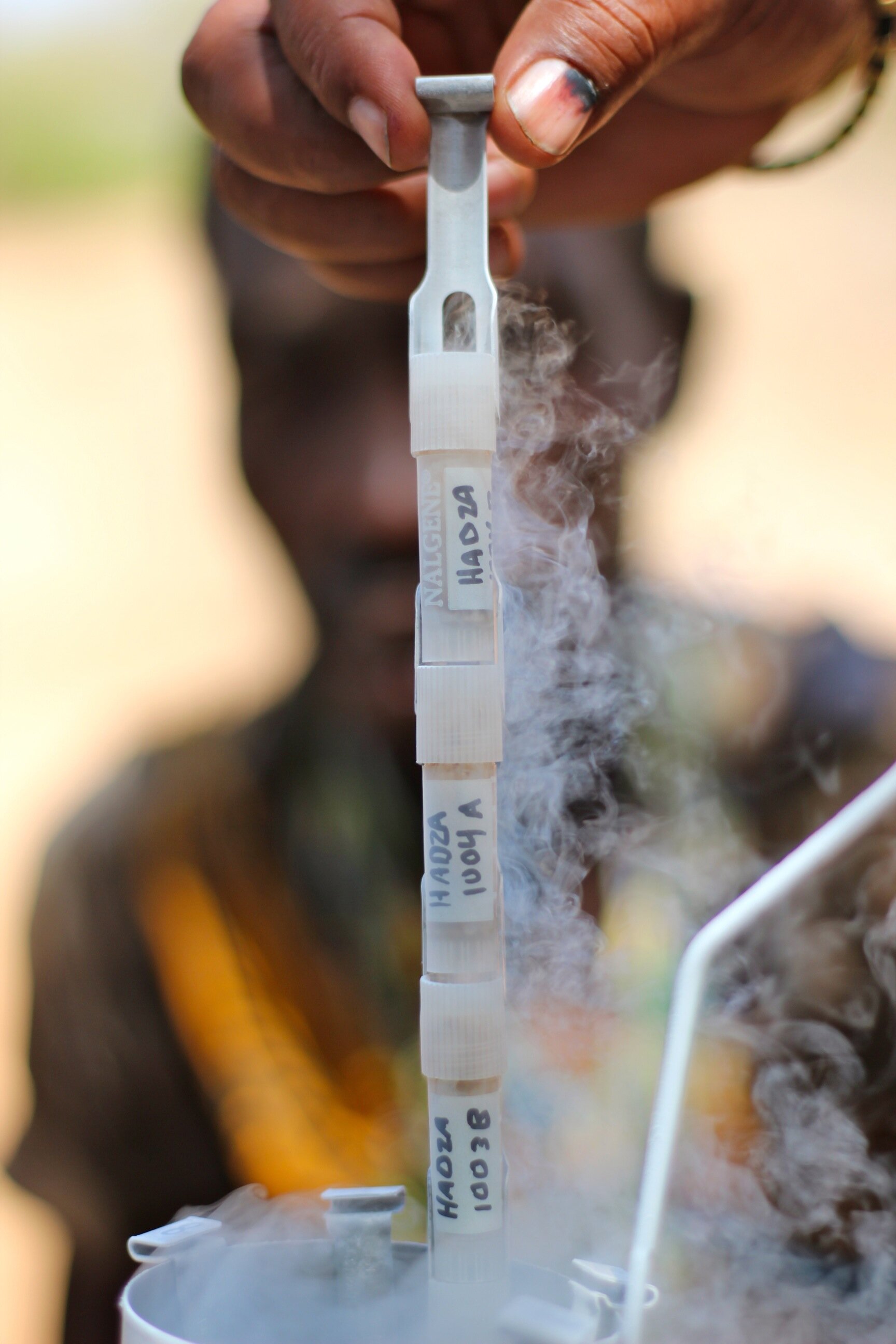PICTURED: The cover to a coffee table book “Hadza” that was released based on research and field notes from a team of Human Food Project scientists that spent some time living with these hunter-gatherer groups in Tanzania. Photo credit Jeff Leach, HFP.
Studying the interactions between our native anatomy and the colonies of trillions of microbes that live within us has become an important part of research within many different medicinal and scientific domains. From sleep science and nutrition, to neurology and longevity, the gut microbiota is never far from researcher’s lips.
However the march towards understanding this topic has led to the conclusion that there is something greater at work here than bacterial species living in your gut. The melding of the terms “gut health, gut-brain connection, gut-skin connection, gut-bone connection,” and so on and so forth, into the broader term “human microbiome,” helps average people understand the ever-so-high degree that bacteria interact with our anatomy.
For thousands of years, humans have hypothesized what exactly the relationship between food and various biological processes might be. Now though, scientists at the Human Food Project have put together the largest cross-cultural examination of the human microbiome and the diversity of microbial species in a large and varied population cohort.
PICTURED: Stool samples taken from the Hadza people are always stored in liquid nitrogen for preservation. These samples helped broaden the American Gut Project horizons to populations that live a more archaic lifestyle.
The global gut
The American Gut Project as it’s called, is an open-source, public science project that allows real people to contribute to scientific advancements – in this case by filling out a questionnaire and sending in a stool sample. UK partners British Gut run a similar operation of living datasets that allow researchers in any academic field to cross-reference, source, or examine, continually evolving data on the human microbiome.
This doesn’t just allow science to paint a larger picture of what a healthy, contributing microbiota looks like, but how it might change or be affected by any number of confounding factors, whether that’s weight, age, exercise, diet, or sleep quality.
The American Gut Project has so far collected and catalogued over 12,000 samples from 15,000 individuals. The majority of the samples were sent in from citizens of the United States, Great Britain, and Australia, but included 42 other countries as well; and their data is already producing results.
Gut microbiome species diversity has been theorized as playing an important role, either as a correlative, causal, or associative factor, in the greater obesity epidemic affecting much of the world, as well as several other diseases.
The American Gut Project research has provided a treasure trove of data that show what interventions could be used to increase gut microbial diversity, and perhaps mitigate certain drivers of obesity.
A picture of plant diversity
“The number of plant types in a person’s diet plays a role in the diversity of his or her gut microbiome — the number of different types of bacteria living there,” writes a collaborative paper from the University of California San Diego.
“No matter the diet they prescribed to (vegetarian, vegan, etc.), participants who ate more than 30 different plant types per week (41 people) had gut microbiomes that were more diverse than those who ate 10 or fewer types of plants per week (44 people)”.
Raja Dhir, an expert in all things gut and co-founder of the probiotics company Seed, said in a recent interview that it wasn’t just that consuming 30 or more plants per week was the most significant contributing factor to microbiome species diversity, but that 10 or less was the second most significant contributor.
It’s entirely reasonable to purpose that many Americans reach the limit of plant diversity at around 6 species; corn, iceberg lettuce, baby carrots, tomato, black pepper, broccoli, or some combination of these and others.
With the American diet being so unhealthy on average, encouraging the public at large or your family to try and get as close to 30 different vegetables per week while simultaneously not asking them to give up any of their favorite foods would theoretically be a great way to slightly improve health outcomes.
The paper from UC San Diego continues…
“The participants who ate more than 30 plants per week also had fewer antibiotic resistance genes in their gut microbiomes than people who ate 10 or fewer plants. In other words, the bacteria living in the guts of the plant-lovers had fewer genes that encode the molecular pumps that help the bacteria avoid antibiotics”.
“This study didn’t address why this might be the case, but the researchers think it could be because people who eat fewer plants may instead be eating more meat from antibiotic-treated animals or processed foods with antibiotics added as a preservative, which may favor the survival of antibiotic-resistant bacteria”.
Sometimes it’s necessary to treat different gut disorders such as small intestinal bacterial overgrowth, or SIBO, with antibiotics. However some of the flora that cause this disorder have developed antibiotic resistance in some cases and with certain drugs. It’s never particularly safe or convenient for bacteria to be immune to treatment methods.
Gut-brain connection
Perhaps the most striking and unexpected find involves the connection between gut bacteria and mental health disorders.
“The American Gut Project researchers also examined the gut microbiomes of 125 people who reported having a mental health disorder, such as depression, schizophrenia, post-traumatic stress disorder (PTSD) or bipolar disorder,” details the paper from UC San Diego.
“They matched each of these participants to individuals who did not have a mental health disorder, but did have other major factors in common, such as country, age, sex and body mass index. The team found that people with a mental disorder had more in common with other people with mental disorders, in terms of the bacteria makeup of their gut microbiomes, than they did with their mentally healthy pairs”.
“The observation held true in both U.S. and UK populations, in males and females, and across age groups. In addition, the research team found some indications that specific bacteria types may be more common in people with depression than people who don’t have the condition”.
Like the UC paper, most of the findings coming from the American Gut data are simply observations, and researchers can’t extrapolate these associations or observations into actual statements on human health or physiology, whether positive or negative, but they represent hypothetically low-hanging fruit, and just as juicy for researchers looking to explore these topics further.



